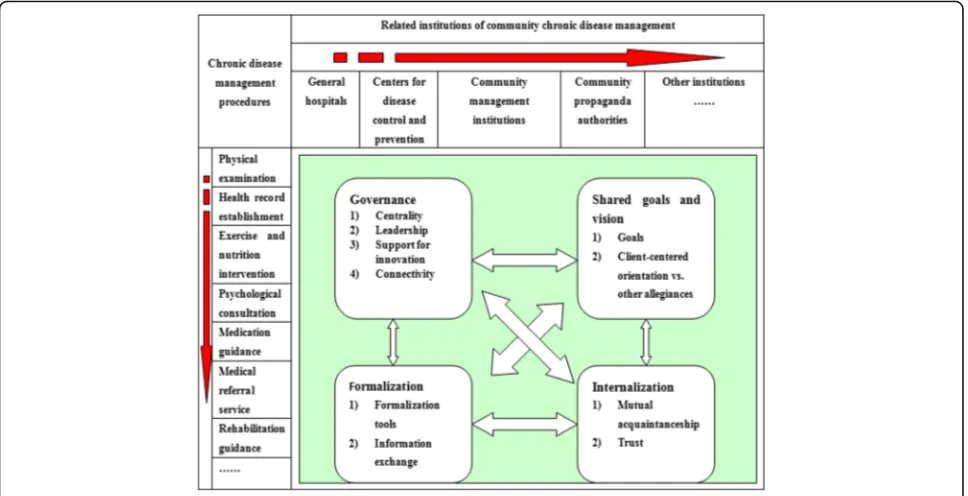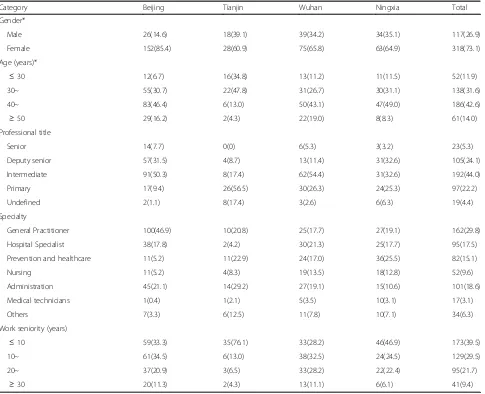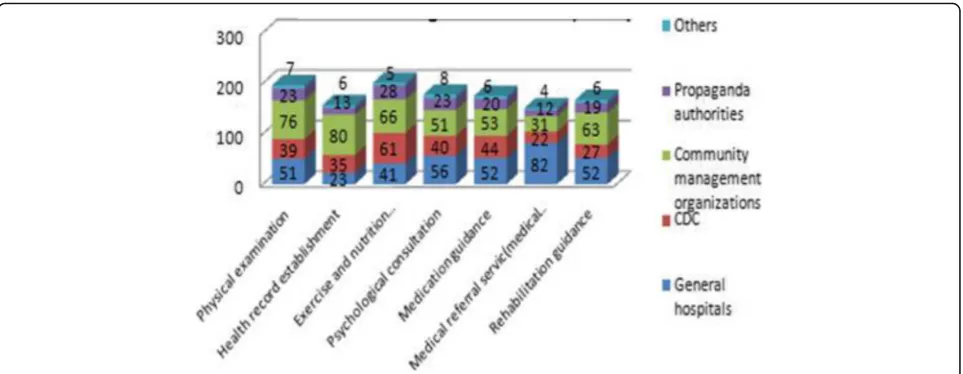An analysis on intersectional collaboration on non communicable chronic disease prevention and control in China: a cross sectional survey on main officials of community health service institutions
Full text
Figure


![Fig. 2 Regional distribution of evaluation scale of inter-organizational collaboration in NCD management in China, 2014 [n = 444, (%)]](https://thumb-us.123doks.com/thumbv2/123dok_us/8285062.284471/6.595.58.540.88.287/regional-distribution-evaluation-scale-organizational-collaboration-management-china.webp)

Related documents
Abstract Cottage cheese (acid) whey is an effective amendment in sodic soil recla- mation, but the high chemical oxygen demand (COD) of whey is of concern in land application..
cal images of original fingerprint (left) and phantom fingerprint (right) illustrates the exceptional quality of the PDMS fingerprint phantoms; the phantom images are
In DMI technical Report 06-09: DMI monthly Climate Data Collection 1768-2005, Denmark, The Faroe Islands and Greenland (Cappelen et al., 2006) a monthly time series of temperature
Assignment, Access GIST Server Assignment, Discussion Forum 1, and Reading Self Check Assignments 1 & 2 no later than 5:00 p.m.. on Tuesday,
How are South African physical science teachers using oral language during teaching to assist learners understand science concepts.. What other factors contribute to
Cultivating sustainability through participatory action research: place- based education and community food systems in Interior
All H-GAC Workforce Solutions contractors will use these management policies and procedures in executing the requirements of their contracts, including but not limited to:
As shown in Table 2, participants represented hospitals, public health and mental health organizations, citizens’ services, emergency medical services, fire/HAZMAT, emergency
![Table 3 Departmental and segmental distribution of evaluation scale of inter-organizational collaboration on NCD management inChina, 2014 [n = 444, n(%)]](https://thumb-us.123doks.com/thumbv2/123dok_us/8285062.284471/8.595.63.532.113.721/departmental-segmental-distribution-evaluation-organizational-collaboration-management-inchina.webp)
![Table 3 Departmental and segmental distribution of evaluation scale of inter-organizational collaboration on NCD management inChina, 2014 [n = 444, n(%)] (Continued)](https://thumb-us.123doks.com/thumbv2/123dok_us/8285062.284471/9.595.58.539.110.257/departmental-segmental-distribution-evaluation-organizational-collaboration-management-continued.webp)